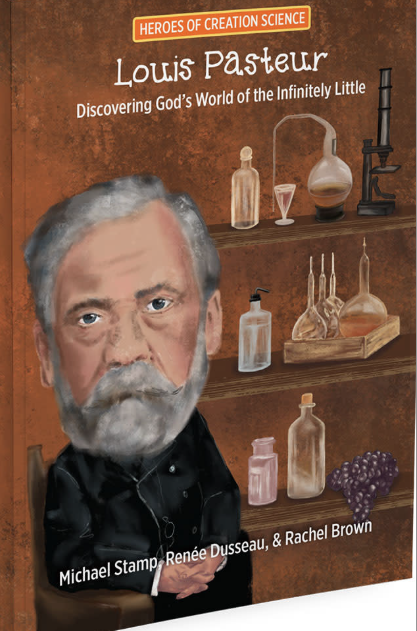Archive
Can you name an animal that is dainty as silk but devious besides? Probably not. From their pictures, we might imagine that octopuses are solid, scary and, like the majority of marine creatures, not too intelligent. The scary part of the picture is correct, especially if one is a crab or shrimp or abalone. Nevertheless octopuses are typically as insubstantial as a lady’s negligee and smart, smart, smart. Read the rest of this entry »
Despite the fine quality of their fur coats, they look a little dumpy. Their teeth also are a little too prominent to be pleasing – but their whiskers are cute. Certainly they are prominent Canadians. On formal occasions they go by the name Castor canadensis, but to their friends they are simply beavers. The plan of action for any beaver couple is to raise their young and to enjoy long healthy lives. This is not a surprising nor an unusual agenda. Nevertheless of all the wildlife creatures that make their home in most parts of North America, the beaver is fast becoming extremely unpopular. The fact is that beavers are the only animals in the world which can change the landscape to suit their own needs and desires. The trouble is that the beavers’ alterations often do not fit the plans of people living in the same area. Then again in other parts of the country, wildlife officials regard beavers as economical wetlands managers. Read the rest of this entry »
Special eyes
Horseshoe crabs don’t look mysterious and enigmatic, but they are. Normally one would not expect any very deep questions to be evoked concerning creatures which resemble miniature tanks, moving with ponderous dignity across the beach. But these marine creatures with shells, these “crabs”, are not actually miniature when compared to other animals of the seashore. These animals weigh as much as 4.5 kg (10 lbs) and they may grow to be 60 cm (2 ft) long. To find one such specimen would be memorable enough – but where there is one, there are generally thousands or hundreds of thousands. At the appropriate time in the spring, some beaches along the Atlantic seaboard from Maine to Yucatan Peninsula, are invaded by thousands or even millions of these apparitions. Read the rest of this entry »
It’s not hard to imagine the scene. A lush forest crowds the shores of a glittering lake. Chicken-sized birds perch on tree branches or fly ponderously over the lake. Smaller birds also perch or flit joyously hither and thither through the sky. A frisky bipedal (runs on two feet) dinosaur pursues its own agenda in the adjacent woods. One consumes a small sharp-toothed little mammal, perhaps a type of rodent. Insects buzz lazily over the lake while fish and various tiny crustaceans lurk in the watery depths. It all seems so placid. What could mar this moment? Read the rest of this entry »
Every young person in school must study science. Most people would agree that a basic understanding of the workings of the human body, or disease organisms, of weather patterns, of plant biology, local ecology, of electricity, etc. are essential to anyone’s functioning successfully in modern society. Despite the relevance of these topics, many people are uninterested or afraid of studying science. As a result, in the United States, for example, we see a relatively low proficiency in this discipline in the general population. An article in the August 15, 1997 issue of the journal Science, considers why this is so. (Gregg Easterbrook. 1997. “Science and God: A Warming Trend?” Science 277 pp. 890-893) According to the article, influential scientists themselves admit two sources of the problem. firstly many students fear that science teachers will attempt to destroy their religious faith. And secondly, science, as taught seems pointless and devoid of meaning, Who would want to pursue such uninspiring material? Not too surprisingly many Christians elect to avoid it as much as possible. The scientists quoted in Easterbrook’s article, for the most part, suggested that students can have their cake and eat it too. They can retain their religious faith while at the same time adopting the views of modern secular science. In this these scientists are wrong. Many of the conclusions of secular science are incompatible with our Christian faith. This does not however mean that Christians should avoid the study of science. Far from it. It merely means that Christians must actively develop critical thinking skills. They must learn to ask probing questions. Read the rest of this entry »
If you have followed the adventures of scientists who collect fossils for a living, you may have noticed that travel to distant lands is often part of their profession. One such account by Derek Ager, published posthumously in 1993 (The New Catastrophism.Cambridge University Press) contains insights garnered from his travels and experiences during the course of a long career in palaeontology. Read the rest of this entry »
Some things in nature are so unexpected that our reaction can only be one of wonder or amazement. Did you know that some plants, innocent in appearance, but vicious in character, lurk in ponds throughout the world? These plants attract, catch and eat aquatic insects, water fleas and young tadpoles, fish fry, tiny worms and very young insect larvae including mosquito wrigglers. Read the rest of this entry »
A myth, one might imagine, is a story or explanation that is widely believed, but has no basis in fact. While there were numerous myths in the past, modern man believes that he has no need for such fabrications. Science, after all, undertakes to explain everything, and it is empirical and objective, so the saying goes. But even in science, some myths do creep into the public consciousness. It is interesting to notice how popular misunderstandings of scientific information appear and are propagated. An example springs to mind. Consider the recent studies on the “age” of the human race, for example. The conclusions and some headlines were actually misleading. One wonders how many readers obtained an inaccurate understanding of the issue. Let us investigate that case. Read the rest of this entry »
It goes without saying that all living creatures are interesting. Some, however, possess an extra mystique. These are organisms which have closely similar counterparts preserved in stone. Obviously a long history has been enjoyed by living examples of such fossil specimens. The living populations are called living fossils. But what about the rest of living creatures, whose preserved remains we do not find in low lying rock? Is their past any different? Let’s delve into the story of the living fossils in order to find out if they are really special and what is their real claim to fame. Read the rest of this entry »
Why secular scientists seek answers they don’t want and don’t expect to find
It scarcely sounds upbeat! Yet John Horgan’s 1996 book The End of Science was a runaway best seller. How could a book on the status of science at the end of the 20th century be hugely entertaining, wonderful, provocative and intellectually bracing as various reviewers proclaimed? For a start, the author is thoroughly familiar with his subject. John Horgan is a senior writer for Scientific American and has won several prestigious awards for his work. In addition, his position enabled him to secure interviews with many of the most influential scientists of our day. His list is a veritable who’s who of famous individuals including astronomer Sir Fred Hoyle, palaeontologist Stephen Jay Gould, cosmologist Stephen Hawking, evolutionary linguist Noam Chomsky, evolutionist Sir Richard Dawkins, cosmologist Andrei Linde, biologist Lynn Margulis, sociobiologist E. O. Wilson, DNA discoverer Francis Crick and mathematician Claude Shannon (who developed information theory). In some cases Mr. Horgan’s interviews came just in time since scientific philosophers Sir Karl Popper, Paul Feyerabend and David Bohm died within a few months of their interviews in the early 1990s. Read the rest of this entry »
Sometimes the good old days look so appealing. Wouldn’t it be nice to return to the optimistic and traditional 1950s, for example? Alternatively a nice isolated cottage in the woods somewhere would be fine. We could spend our days far from the terrors of technology and pure science. Obviously however, such visions are unrealistic. Christians were placed in this world to be the salt of the earth. There is no escape from the dilemmas of this life. Read the rest of this entry »
In Nova Scotia, on the shores of Chignecto Bay (near the head of the Bay of Fundy) lies the village of Joggins. Like many communities in Nova Scotia, this one first made a living by mining coal. As early as 1720, coal was exported from there to Boston. At its peak, the mine yielded about 91,000 tonnes of coal per year. The Joggins mine finally closed in the late 1950s, but in recent years, interest in this area has continued greater than ever. The 150 foot high cliff on the shore of the bay, reveals layers of sandstone, mudstone and fossilized plants. These have a story to tell. Read the rest of this entry »






